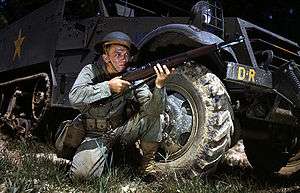Haversack

A haversack or small pack is a bag with a single shoulder strap. Although similar to a backpack, the single shoulder strap differentiates this type from other backpacks. There are exceptions to this general rule.
Origins
The name 'Haversack' originates from its usage to carry 'Havercake' and almost certainly related to Hafer, the German word for Oats. Havercake was a rough type of bread simply made from oats and water, with the addition sometimes of yeast to bulk it out. Oats were the staple food of the poor, especially in the textile districts of the north of England, during the privations caused by the Napoleonic Wars. Havercake was made in the form of a thick biscuit as a convenient way to take food to the factory for the mid-day meal, and the haversack was the bag in which it was carried. This system, using havercake carried in a haversack, was also used widely by the military for the individual soldier to carry his rations. The Duke of Wellington's Regiment was nicknamed the 'Havercake Lads' because the recruiting sergeants used to display a piece of havercake held aloft on a bayonet, to signify that food would never be a problem if enlisted; a great encouragement to recruiting when the general population was starving.
The haversack, especially when used in the military, was generally square about 12 inches (30 cm) per side with a button-down flap to close it. When empty the bag could be folded in three and an extra button on the back of the bag would allow it to be refixed in this position. For the military this made it neat and, when held to the side in its folded form by the soldiers belt, it became part of the uniform of many regiments in the British army.
General usage
In Australia and elsewhere, the word haversack is synonymous with rucksack or other similar terms and is used to describe any backpack or more than one backpack
U.S. Army Haversack
Haversacks were in use during the American Civil War, as recounted in Grant's memoirs, "In addition to the supplies transported by boat, the men were to carry forty rounds of ammunition in the cartridge-boxes and four days' rations in haversacks."[1]
In 1910 the U.S. Army adopted the M-1910 haversack (or M10) as the standard back pack for all infantrymen. The pack is essentially a sheet of rugged khaki-colored canvas that folds around its contents (bedroll, clothing, daily rations, and assorted personal items), and is held together by flaps and adjustable buckle-straps. The two shoulder straps are designed to attach to a web belt or suspender configuration. The exterior of the pack has loops, rings, and grommet tabs for attaching a bayonet sheath, a "meat can" (mess kit) pouch, and a canvas carrier for a short-handled shovel (a.k.a. entrenchment tool).[2]
The M-1910 haversack pack continued production during the interwar years with minor modifications and was issued to many troops in the early part of WW II due to M-1928 haversack shortages. "An upgraded haversack was developed in 1928 that had quick release buckles and a web strap and buckle closure on the meat can pouch replacing the metal button. However, the M-1928 haversack did not go into production until 1940, and older haversacks continued to be issued until stocks were exhausted." The M-1944 Combat Pack was developed from the much lighter and user friendly US Marine Corps M1941 Jungle pack which was developed during the Banana Wars which required a lighter pack in the tropics. The M-1944 pack had some shortcomings and a new M-1945 began replacing earlier packs in February 1945. The two packs had incompatible combat and cargo packs due to different release buckles.[3]
The new two-part design, based on the Marine M-1941 Jungle pack, used a much smaller back pack (for rations, clothes, ammunition, and messkit), and a separate Cargo Bag that attached to the bottom for extra clothes, shoes, and misc. items. The upper field pack had the same type of grommet tabs and loops as the M-1928 for attaching a bayonet and entrenchment tool plus straps for securing a "horseshoe" bedroll.[4]
The M-1936 Field Bag was a copy of the British officers Musette bag of WW I and to be issued to officers and mounted personnel. It was a smaller pack lacking shoulder straps and could be attached to a set of cotton web suspenders or carried by a single general purpose shoulder strap. It intended to carry rations, mess gear, and other essential items. It was smaller as less essential gear would be carried on a vehicle.[5]
U.S. Marine Corps Haversack
The Marines carried the M-1910 haversack and somewhat improved M-1928 haversack in both world wars, but they also developed their own exclusive pack system in 1941. The M-1910 haversack was considered too overweight and cumbersome for jungle fighting in the tropics of Central America during the Banana Wars years. A more versatile two-part M-1941 system was devised. This comprised an upper "marching pack" for rations, poncho and clothes, and a lower knapsack for extra shoes and utilities. The exterior of the upper pack had loops and grommet tabs for attaching a bayonet, shovel, bedroll, extra canteen, and first-aid pouch. It was issued in tan or khaki canvas.[6]
See also
Notes
- ↑ Personal Memoirs of Ulysses S Grant, Grant, Kindle location 12783
- ↑ http://www.gear-illustration.com/2016/04/21/m1910-haversack-second-pattern/
- ↑ http://history.army.mil/html/museums/messkits/Field_Mess_Gear(upd_Jul09).pdf
- ↑ http://www.ww2gyrene.org/Prewar_782_Gear.html
- ↑ http://history.army.mil/html/museums/messkits/Field_Mess_Gear(upd_Jul09).pdf
- ↑ http://www.ww2gyrene.org/Prewar_782_Gear.html
External links
| Look up haversack in Wiktionary, the free dictionary. |